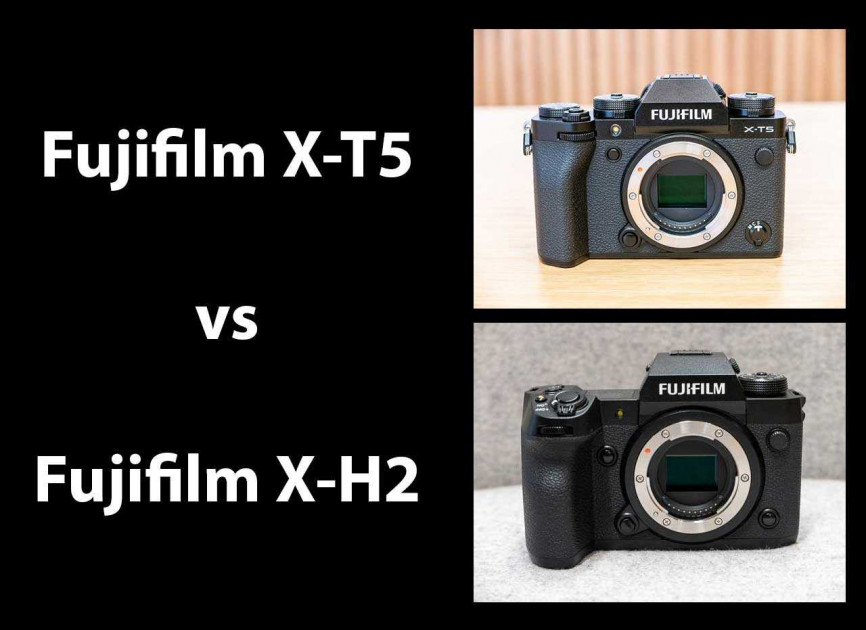
Although they outwardly look very similar, the XT5 that was released in 2022 and the XT4 from 2020 actually differ a lot when it comes to their key specifications and features, so much so that buyers may be asking if the older model offers everything that they need, or if they need to upgrade to the new version.
So we’re bringing you this in-depth Fujifilm X-T5 vs X-T4 head-to-head comparison to help you choose between these two mirrorless cameras.
You can also read our detailed Fujifilm X-T4 review to find out exactly what we think of that camera.
Sensor
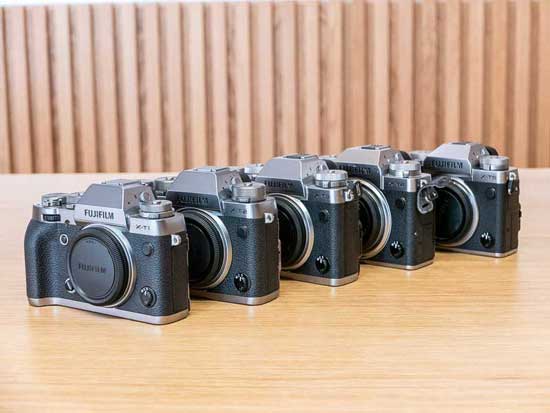
The image sensor used in the X-T4 is now the previous generation 26 megapixel BSI X-Trans CMOS 4 sensor.
The new X-T5 ups the ante considerably to a brand new 40.2 megapixel sensor, offering much greater resolution.
It actually uses exactly the same X-Trans CMOS 5 HR sensor as the more expensive X-H2 camera, with HR standing for High Resolution.
This is a BSI (back-side illuminated) sensor design that has much more of a focus on detail and resolution than out-and-out speed.
It also allows the XT5 to record 6K video, surpassing the XT4 which can only record up to 4K video.
Pixel Shift Multi-shot
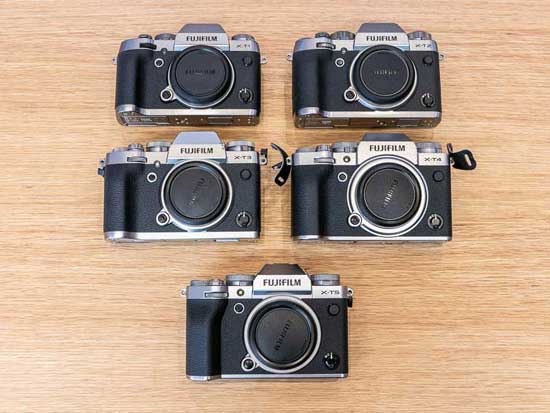
The X-T5 is the first ever X-T series Fuji camera to feature the special Pixel Shift Multi-Shot mode, which delivers 160 megapixel images for the ultimate quality when detail really matters.
Previously only seen on the company’s GFX-branded medium-format cameras and on the recently introduced X-H2, in the Pixel Shift Multi-Shot mode the camera records 20 frames, shifting the sensor by 0.5 pixels between each frame.
The resulting images are automatically combined into one DNG RAW file, which can then be output to a desired file format using suitable RAW processing software.
The X-T4 does not offer this feature at all.
ISO Speed
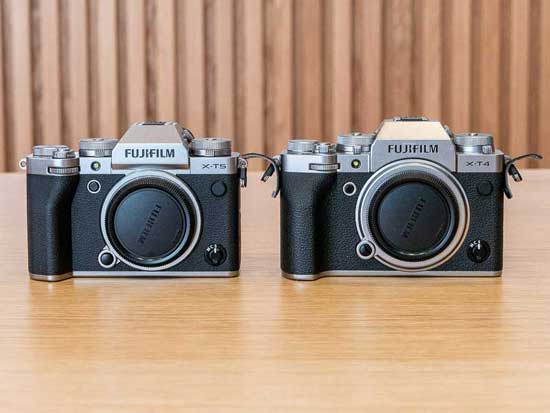
The native sensitivity range of the X-T4 is ISO 160 to ISO 12,800, which can be expanded down to ISO 80 and up to ISO 51,200.
The new X-T5 has a slightly lower base sensitivity of ISO 125, which can be expanded down to ISO 64 and up to ISO 51,200.
Video
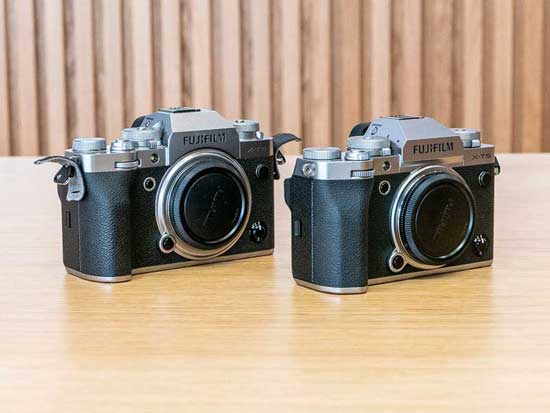
Despite being predominantly marketed as a camera for photographers rather than videographers, the X-T5 still offers a markedly better video mode than the X-T4 and is definitely the one to buy if you have any interest in movie-making.
The newer camera offers a highest quality rate of 6.2K/30p with a modest 1.23x crop recorded in 4:2:2 10-bit internally.
The XT4 can’t record at all in 6K because of its lower resolution 26 megapixel sensor.
Both cameras support up to DCI 4K/60p recording but the X-T4 does so with a 1.17x crop factor, whereas the X-T5 doesn’t apply any crop to its 4K/60p footage.
Both models can shoot 1080/240p slow-motion footage.
The XT5 additionally offers the new F-Log 2 profile with up to 14+ stops of dynamic range.
Combined with a compatible HDMI recording device from Atomos or Blackmagic Design, 12-bit RAW video output from the X-T5 can be recorded as Apple ProRes RAW or Blackmagic RAW.
The X-T5 also features a digital zoom function that uses the camera’s 40.2MP sensor to deliver up to 2x of digital zoom with little to no loss in resolution, when recording video in 4K.
Autofocus
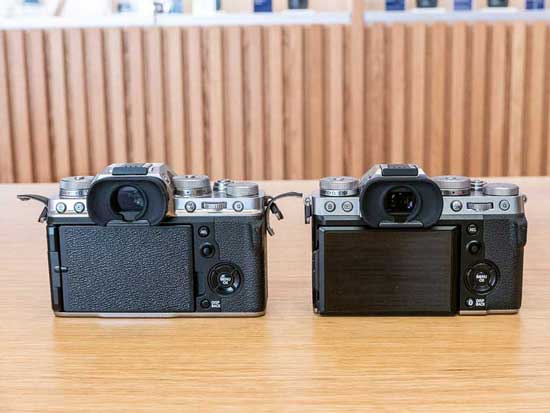
The new X-T5 has exactly the same hybrid autofocus system with phase detection and and contrast detections points as the more expensive X-H2.
In the Single point AF mode there are up to 425 selectable AF points arranged in a 25×17 grid. Alternatively, the camera can be set to 117 points in a 13×9 grid, and the size of the points can also be varied.
In addition to Single point AF, there’s Zone AF which allows the AF points to be selected in 3×3, 5×5 or 7×7 groups, and Wide/Tracking AF.
The X-T5 can automatically detect animals, birds, cars, bikes, planes and trains thanks to the X-Processor 5’s AI deep learning capabilities, a feature that no Fujifilm camera other than the XH2S and X-H2 have had before.
Thanks to its 40 megapixel sensor, the XT5 also offers a greater number of PDAF points (3.3 million) than the XT4 (2.16 million).
Fujifilm have also further improved the auto-focus algorithm, claiming that the AF system is 3x faster on the X-T5 than on the X-T4, and also with better eye/face detection than the older model.
Both cameras can focus down to an incredible -7EV in low-light.
Burst Shooting

The X-T4 was something of a speed demon when it was released in 2020, so much so that it actually still out-performs the new X-T5.
It can shoot at 20fps when using the electronic shutter without any crop, or 30fps with a 1.25x crop applied.
The XT5 can only shoot at up to 20fps when using the electronic shutter, and that’s with a 1.29x crop applied.
Both models offer the same 15fps continuous shooting speed when using the mechanical shutter.
Shutter Speed

The new XT5 improves the fastest shutter speed for the electronic shutter by 2.5 stops, from 1/32000 sec on the XT4 to 1/180000 sec.
This allows users to leave the aperture wide open in very bright conditions such as a sunny beach or a ski slope, or to capture a split-second motion.
Body and Design
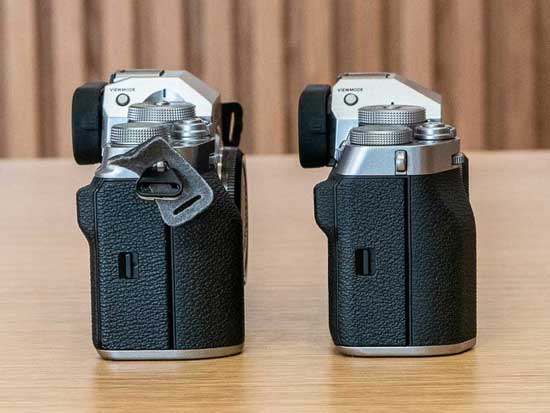
The new X-T5 is virtually identical to its predecessor, retaining all of the traditional dials and controls that Fuji users have come to know and love, including the classic Fujifilm ISO, Shutter Speed and Exposure Compensation dials on top of the camera.
It’s actually almost as small and portable as the original X-T1, just measuring 16mm deeper because of the IBIS unit and larger capacity battery.
The XT5 weighs 476g or 557g with a battery fitted, making it 50g lighter than the XT4.
IBIS
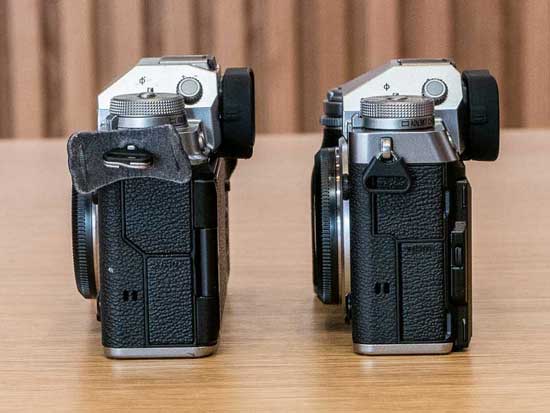
The XT5 is the sixth Fujifilm camera to feature 5-axis in-body image stabilisation (IBIS), following on from the X-H1, X-H2, X-H2S, X-H2 and the X-S10.
The X-T4 provides up to 6.5 shutter steps of compensation for stills, whereas the X-T5 provides up to a maximum of 7 stops, half a stop better and the joint-best of any current Fujifilm camera with the X-H2 and X-H2S.
Viewfinder
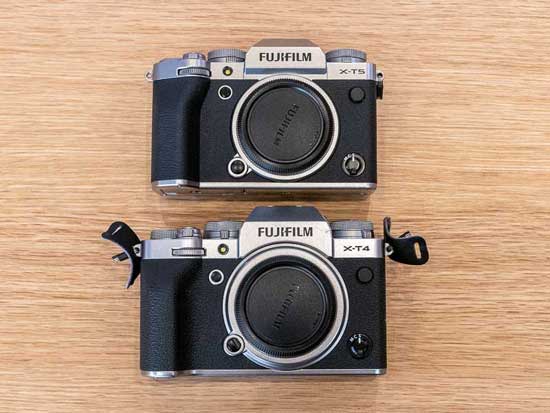
Both models have the same very good 3.68M-dot OLED electronic viewfinder, 100fps refresh rate and a built-in eye sensor, but the EVF on the XT5 offers slightly higher magnification (0.80x vs 0.75x).
LCD Screen
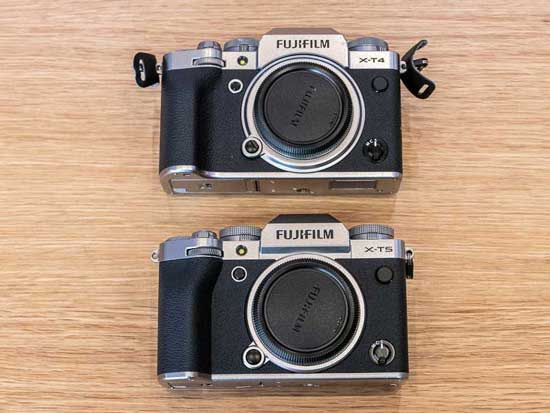
One of the biggest differences between these two cameras is the action of the LCD screen.
Fujifilm have gone back to a 3-way tilting LCD on the new X-T5, rather than the vari-angle screen on the X-T4, saying that it better matches the more stills-focused nature of the newer model.
The resolution of the screen has also been increased slightly from 1.62M-dots to 1.84M-dots, making it the highest-res screen of any current Fujifilm APS-C camera.
Memory Cards
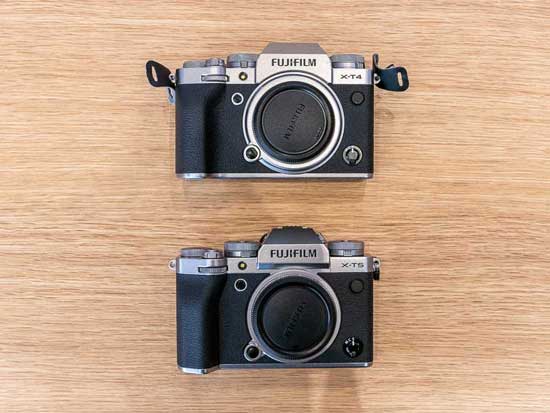
The X-T5 has dual memory card slots, just the X-T4, and just like the X-T4 it has two UHS-II SD card slots, rather than one UHS-II SD slot and one CFexpress Type B slot as seen on the recent X-H2S and X-H2 cameras.
Battery Life
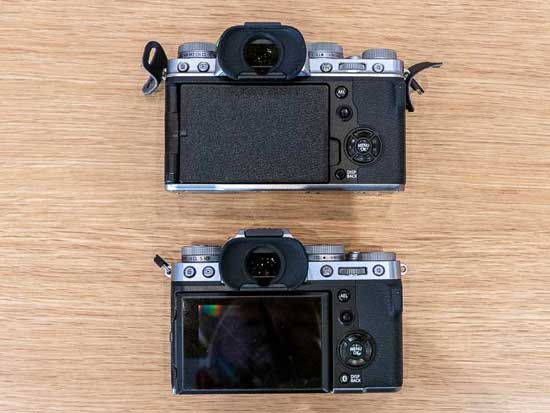
Despite the X-T5 using exactly the same NP-W235 batteries as the X-T4, Fujifilm are claiming that it offers 740 shot battery life in economy mode, which is actually 20% better than the XT4.
Both cameras can also be powered and charged via a USB-C connection, which is useful if you’re out and about and have a compatible power-bank to plug the camera into.
Vertical Battery Grip
Perhaps somewhat controversially, the new X-T5 does not support a vertical battery grip (there are no contacts on the bottom of the camera).
Fujifilm say this is based on market data for the X-T4 which showed that the majority of owners did not buy one.
Instead you can buy the optional MHG-XT5 metal hand grip if you feel than the body on its own is too small.
The X-T4 does support a vertical battery grip, which as well as making handling easier in portrait mode, greatly increases the available battery life.
Price
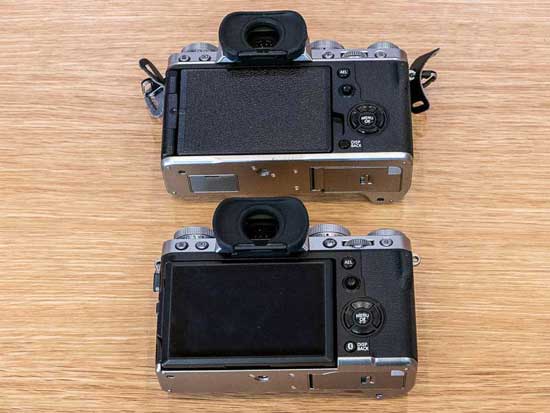
The new Fujifilm X-T5 is priced at £1699 / $1799 body-only in the UK and USA respectively.
The Fujifilm X-T4 was priced at £1549 / $1699 body only when it initially launched two years ago, a price that remarkably it still commands today.
Conclusion
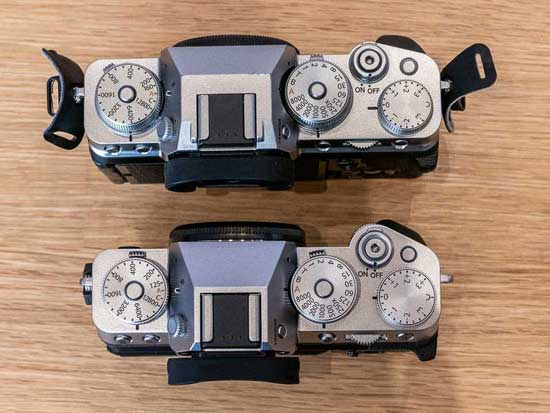
The new Fujifilm X-T5 retains the classic retro styling and control layout of its predecessor but uses the same 5th generation sensor and processor as the X-H2.
Therefore it represents a big step forward in many ways for the XT-series, from the 40 megapixel resolution to unlimited 4K/60p recording with no crop, and from the faster, AI-driven AF system that can recognise a lot more subjects to the improved EVF and IBIS.
So what do you think? Would you choose the new X-T5 or the still incredibly popular X-T4? Leave a comment below!

